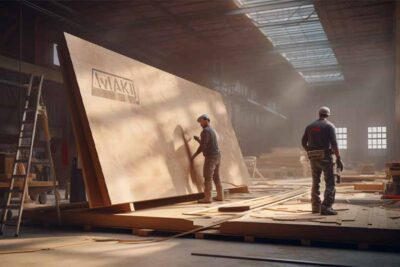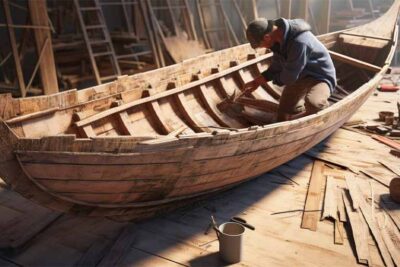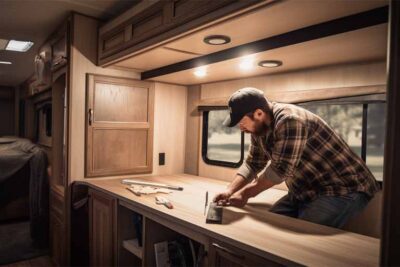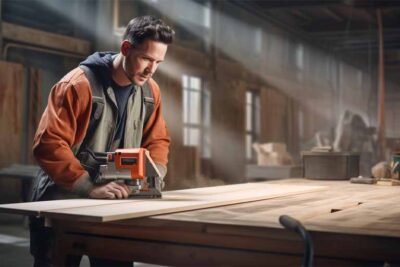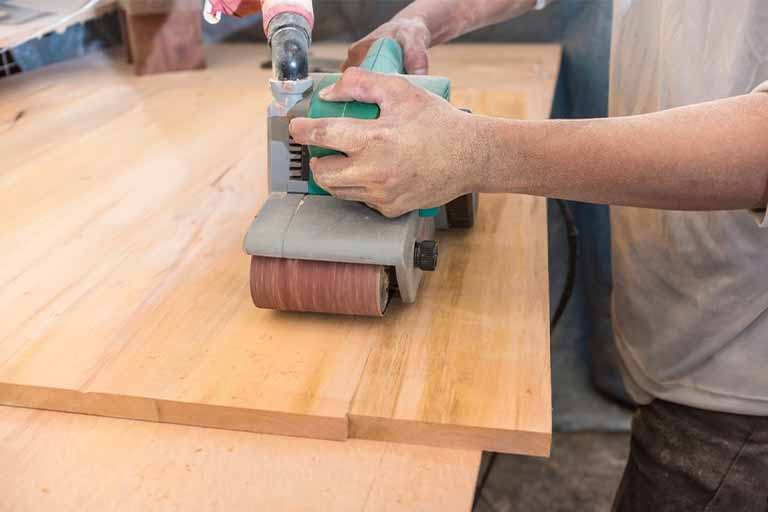
The Best Plywood for Making Cabinets: A Comprehensive Guide
The Best Plywood for Making Cabinets: A Comprehensive Guide
When it comes to making cabinets, choosing the right plywood is essential for creating a strong and durable product. In this comprehensive guide, we will explore the factors to consider when selecting plywood for cabinets, the different grades and types of plywood, the various veneers and cores available, and the best finishing techniques for achieving a professional look.
Why Choosing the Right Plywood is Essential for Cabinet Making
Importance of Plywood in Cabinet Making
Plywood is a key component in cabinet making, as it provides the structural foundation for the cabinet frame and doors. Plywood is made by bonding several layers of wood veneer together with adhesive, which creates a strong and stable material that is less prone to warping and splitting than solid wood.
How Choosing the Wrong Plywood can Affect Your Cabinets
Choosing the wrong plywood can result in a cabinet that is weak, prone to warping, or unsightly. Plywood that is not moisture-resistant can lead to mold growth and deterioration over time, while plywood that is not strong enough can cause the cabinet to collapse under the weight of heavy items.
Factors to Consider When Selecting Plywood for Cabinets
When selecting plywood for cabinets, there are several factors to consider:
Durability and Strength
Plywood that is rated for structural use is the best choice for cabinets, as it is designed to withstand heavy loads and resist warping.
Grain Pattern and Color
The grain pattern and color of the plywood can affect the appearance of the finished cabinet. Plywood that has a more uniform grain pattern is often preferred for cabinets that will be painted, while plywood with a more distinctive grain pattern is ideal for cabinets that will be stained or finished with a clear coat.
Moisture Resistance
Cabinets that will be installed in areas with high humidity, such as kitchens and bathrooms, should be made from moisture-resistant plywood to prevent damage from water and mold.
Sustainability
Plywood made from sustainably harvested wood is an environmentally friendly choice that helps to preserve the world’s forests.
Budget
The cost of plywood can vary widely, so it is important to select a plywood that fits within your budget without sacrificing quality.
Plywood Grades and Types
Understanding Plywood Grades: A, B, C, and D
Plywood is graded based on the quality of its surface veneers, with A being the highest quality and D being the lowest.
What do the Grades of Plywood Mean?
A-grade plywood has a surface veneer that is free of defects such as knots, splits, and discoloration. B-grade plywood may have small knots and splits, while C-grade plywood can have larger knots and splits, and D-grade plywood may have open knots, splits, and other defects.
Differences in Appearance and Quality Between Grades
The appearance and quality of the plywood can vary widely between grades, with A-grade plywood having a smooth and consistent surface, while D-grade plywood may have an uneven surface with visible defects.
Recommended Uses for Each Grade
A-grade plywood is ideal for cabinets that will be finished with a clear coat or stained, while B-grade plywood is suitable for cabinets that will be painted. C-grade plywood is often used for shelving and other non-visible areas, while D-grade plywood is best used for projects where appearance is not a concern.
Types of Plywood for Cabinet Making: Softwood, Hardwood, and Decorative
Softwood Plywood: Pros and Cons, Recommended Uses
Softwood plywood is made from softwood species such as pine, fir, and cedar. It is less expensive than hardwood plywood and is often used for cabinets that will be painted or covered with a laminate. However, it is not as strong as hardwood plywood and may not hold up well over time.
Hardwood Plywood: Pros and Cons, Recommended Uses
Hardwood plywood is made from hardwood species such as oak, birch, and maple. It is stronger and more durable than softwood plywood and is ideal for cabinets that will be stained or finished with a clear coat. However, it is more expensive than softwood plywood and may be harder to work with due to its density.
Decorative Plywood: Pros and Cons, Recommended Uses
Decorative plywood is made from a combination of hardwood and softwood species and is designed to have a more distinctive appearance than traditional plywood. It is often used for cabinets that will be the focal point of a room, such as a kitchen island or entertainment center. However, it is more expensive than standard plywood and may not be as strong or durable.
Plywood Veneers
What are Plywood Veneers and How They Affect Cabinet Making
Plywood veneers are thin sheets of wood that are glued together to form a plywood panel. The quality and appearance of the veneers can greatly affect the strength and appearance of the finished cabinet.
What are Veneers and Why are They Used in Plywood?
Veneers are used in plywood to create a stronger and more stable material than solid wood. By laminating several thin sheets of wood together, the natural defects in each sheet are cancelled out, resulting in a more uniform and stable material.
How Veneers Affect the Strength and Appearance of Cabinets
The quality and appearance of the veneers can affect the strength and appearance of the finished cabinet. High-quality veneers that are free of defects will create a stronger and more durable cabinet than lower-quality veneers. Additionally, the grain pattern and color of the veneers can greatly affect the appearance of the finished cabinet.
Different Types of Plywood Veneers: Rotary Cut, Quarter Cut, and Plain Sliced
Rotary Cut Veneers: Pros and Cons, Recommended Uses
Rotary cut veneers are created by peeling the log in a spiral motion, resulting in a veneer with a broad and irregular grain pattern. This type of veneer is less expensive than other types, but may not be as strong or durable. It is often used for cabinets that will be painted or covered with a laminate.
Quarter Cut Veneers: Pros and Cons, Recommended Uses
Quarter cut veneers are created by cutting the log into quarters and then slicing it into veneers. This type of veneer has a more uniform grain pattern than rotary cut veneers and is often used for cabinets that will be stained or finished with a clear coat.
Plain Sliced Veneers: Pros and Cons, Recommended Uses
Plain sliced veneers are created by slicing the log in a straight line, resulting in a veneer with a more distinctive grain pattern than rotary cut veneers. This type of veneer is often used for cabinets that will be the focal point of a room, such as a kitchen island or entertainment center.
Plywood Cores
Types of Plywood Cores: Veneer Core, Particleboard Core, and MDF Core
What are Plywood Cores and Why are They Important?
Plywood cores are the inner layers of plywood that provide the bulk of the material’s strength and stability. The type of core used can greatly affect the strength, durability, and moisture resistance of the finished cabinet.
Veneer Core Plywood: Pros and Cons, Recommended Uses
Veneer core plywood is made from thin layers of wood veneer that are glued together to form the core. This type of core is strong and moisture-resistant, making it ideal for cabinets that will be installed in areas with high humidity.
Particleboard Core Plywood: Pros and Cons, Recommended Uses
Particleboard core plywood is made from wood particles that are bonded together with adhesive. This type of core is less expensive than veneer core plywood, but is not as strong or moisture-resistant. It is often used for cabinets that will be painted or covered with a laminate.
MDF Core Plywood: Pros and Cons, Recommended Uses
MDF core plywood is made from medium-density fiberboard that is bonded to the veneer layers. This type of core is very strong and moisture-resistant, making it ideal for cabinets that will be installed in areas with high humidity. However, it is more expensive than other types of core and may be harder to work with due to its density.
Advantages and Disadvantages of Each Core Type for Cabinet Making
Strength and Durability
Veneer core plywood and MDF core plywood are the strongest and most durable types of core for cabinet making, while particleboard core plywood is the least durable.
Moisture Resistance
Veneer core plywood and MDF core plywood are the most moisture-resistant types of core for cabinet making, while particleboard core plywood is the least moisture-resistant.
Cost
Particleboard core plywood is the least expensive type of core, while MDF core plywood is the most expensive.
Finishing Plywood for Cabinets
Preparing and Sanding Plywood for Finishing
Importance of Proper Preparation and Sanding
Proper preparation and sanding of the plywood is essential for achieving a professional finish. The surface of the plywood should be smooth and free of defects before applying any finish.
Step-by-Step Guide to Preparing and Sanding Plywood for Finishing
- Begin by cleaning the surface of the plywood with a damp cloth to remove any dust or debris.
- Use a putty knife to fill any gaps or holes in the plywood with wood filler.
- Sand the surface of the plywood with a fine-grit sandpaper to remove any rough spots or blemishes.
- Use a tack cloth to remove any dust or debris from the surface of the plywood.
Choosing the Right Finish: Stain, Paint, or Clear Coat
Pros and Cons of Each Finish Type
Stain, paint, and clear coat are all popular finishes for plywood cabinets, each with their own advantages and disadvantages. Stain allows the natural grain of the wood to show through, while paint can be used to create a variety of colors and styles. Clear coat provides a protective layer that allows the natural beauty of the wood to shine through.
Recommended Uses for Each Finish Type
Stain is ideal for cabinets that will be placed in areas where the natural beauty of the wood is a key feature, such as in a rustic kitchen or cabin. Paint is ideal for cabinets that will be the focal point of the room, such as in a modern kitchen or entertainment center. Clear coat is ideal for cabinets that will be installed in high-traffic areas, such as in a busy kitchen or bathroom.
Tips for Achieving a Professional Finish on Plywood Cabinets
Choosing the Right Tools and Materials
Choosing the right tools and materials is essential for achieving a professional finish on plywood cabinets. Use high-quality brushes and rollers, and choose a finish that is appropriate for the type of plywood you are using.
Applying the Finish Properly
Proper application of the finish is also essential for achieving a professional look. Follow the manufacturer’s instructions carefully, and apply the finish in thin, even coats.
Troubleshooting Common Problems
Common problems when finishing plywood cabinets include streaks, brush marks, and bubbles. If you encounter any of these problems, stop and address them immediately before continuing with the finishing process.
In conclusion, choosing the right plywood is essential for creating strong, durable, and beautiful cabinets. By considering factors such as durability and strength, grain pattern and color, moisture resistance, sustainability, and budget, you can select the best plywood for your project. Understanding the different grades and types of plywood, veneers, and cores, as well as the best finishing techniques, will ensure that your cabinets are of the highest quality.
Overall, we recommend selecting veneer core plywood or MDF core plywood for cabinets that will be installed in areas with high humidity, and using A-grade hardwood plywood for cabinets that will be stained or finished with a clear coat. For cabinets that will be painted or covered with a laminate, we recommend using B-grade softwood plywood or particleboard core plywood.
For more information on plywood grades, types, and finishes, visit our website or contact our team of experts.
Call us now or fill out our contact form to learn more about our selection of film faced birch plywood, hexa flooring, UV prefinished plywood, birch faced plywood, thin flexible plywood, patterned plywood, laminated birch plywood, and other top-quality plywood products.



